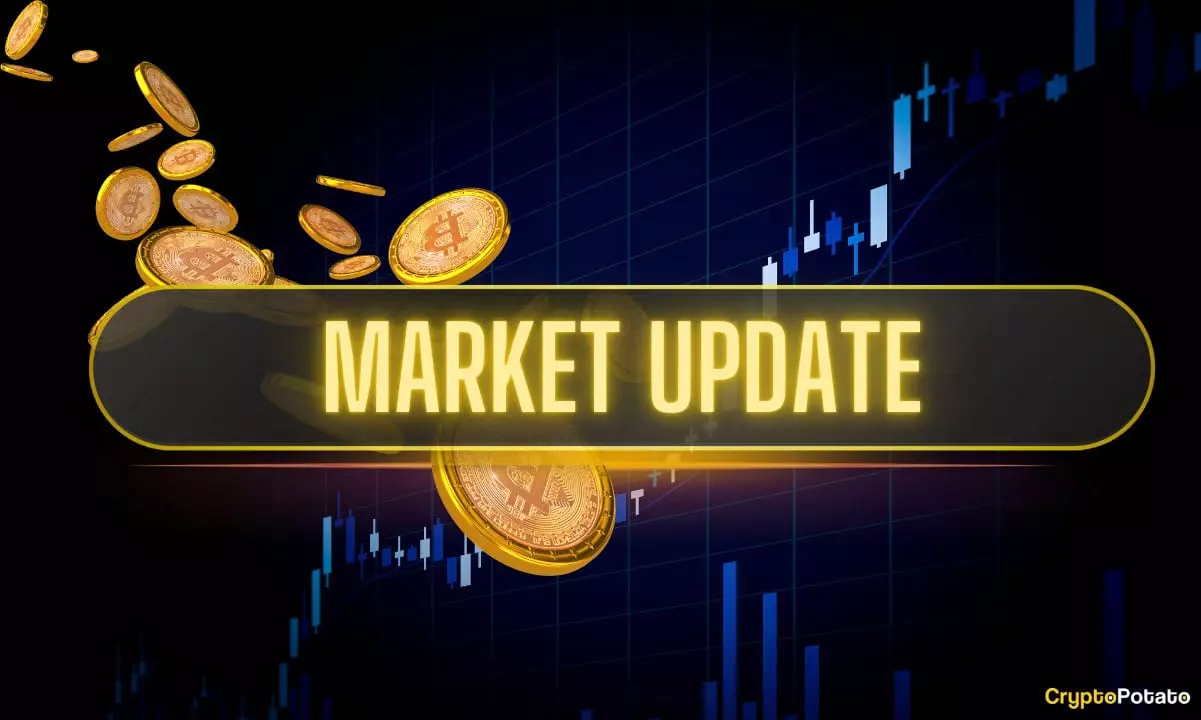Bitcoin’s journey has always been a turbulent ride replete with expectations and disappointments. After a gripping four-month saga that saw investors grappling with price crashes and rebounds, the cryptocurrency finally breached its previous all-time high of $109,100, reaching the astonishing figure of $112,000. However, this ascent was not a smooth sail. Over the past week, the market witnessed BTC testing the $107,000 threshold on multiple occasions, only to face significant pushbacks that often sent it plummeting downward. What encapsulates this narrative of climbing volatility is not merely the numeric ascension but the enduring spirit of the bulls who refused to yield to despair. Their relentless drive ultimately propelled Bitcoin into the stratosphere, culminating in landmark moments that will be etched into the annals of cryptocurrency history.
Market Reaction to Political Disruptions
As with any asset, external factors significantly influence Bitcoin’s price movement. Notably, US President Donald Trump reignited tensions through proposed tariff warnings—a staggering 50% tax on European Union nations. The turbulent announcement reverberated through the crypto market, instigating a substantial drop in Bitcoin’s price, resulting in a slump of $3,500. This sharp fluctuation underscores the vulnerability of cryptocurrencies to political decisions, reflecting not just the asset’s exposure to macroeconomic variables but also the tightly interwoven relationship between regulatory landscapes and market behavior. Not surprisingly, Bitcoin managed to reclaim some lost ground, currently standing close to the $109,000 mark. What remains perplexing is how Bitcoin’s resurgence signals a time of unshakeable resilience in the face of external pressures, indicating a potential ability to withstand political volatility.
Emerging Players Driving Market Dynamics
While Bitcoin remains the heavyweight champion in the crypto arena, its competitors are not to be overlooked. The emergence of HYPE, a newcomer that has gained spectacular traction since last week, capturing attention with a staggering 30% upsurge, provides a fresh perspective on the evolving dynamics of the crypto marketplace. The narrative here is shifting from an undifferentiated herd mentality surrounding Bitcoin to a more diversified acknowledgment of the alternative currencies that have been touted as the potential superstars of the altcoin market. The attention directed toward multiple assets can stimulate a healthy competitive environment that ultimately enhances innovation and decentralization.
Institutional Moves: Implications for the Future
Institutional involvement in the cryptocurrency space offers an avenue for credibility and stability. Reports indicate that several of the leading US banks—including JPMorgan Chase, Citigroup, and Bank of America—are in discussions to launch a joint stablecoin. This initiative aims to streamline routine transactions, reinforcing the notion that traditional finance is taking cryptocurrencies seriously as viable alternatives for operational efficiency. Such collaborations have the potential to serve as a bridge between traditional and decentralized finance, catalyzing broader acceptance of digital currencies and lending Bitcoin a fortified status in the financial ecosystem.
Assessing the Health of Bitcoin’s Rally
Despite reaching new heights, some market analysts express a skeptical note regarding the sustainability of this recent rally. However, on-chain data presents a counter-argument, indicating that Bitcoin’s ascent is more robust compared to its previous surges, including the January spike. This analysis suggests ongoing bullish sentiment among investors, further supported by a decline in ETH stored on exchanges, typically a bullish signal. Contextualizing the long-term health of Bitcoin’s rally is critical in understanding whether this market momentum can be sustained, positioning BTC not just as a speculative asset but as a cornerstone of digital finance.
Concerns over Centralization with ETFs
The burgeoning discussion surrounding BlackRock’s Spot Bitcoin ETF IBIT has illuminated significant concerns regarding potential centralization within a predominantly decentralized ecosystem. While IBIT’s rapid growth in Assets Under Management raises questions about competitive dynamics, it also opens up discussions about the internal contradictions of the cryptocurrency’s foundational ethos—decentralization. As more traditional financial entities penetrate the crypto market, the balance between innovation and centralization will be critical to evaluate, as enthusiasts and investors alike will need to introspect on the very principles that made cryptocurrencies appealing in the first place.
The Bigger Picture: Looking Beyond Volatility
Bitcoin’s recent highs represent not merely fleeting exuberance but a complex interplay of market realities that extend beyond mere price action. With new players emerging, institutional interest deepening, and volatility persisting, the landscape of cryptocurrency remains as dynamic as ever. This unpredictability invites engagement and exploration, compelling both novices and seasoned investors to navigate the intricate intertwining of finance, politics, and technology in understanding the future trajectory of digital currencies.















